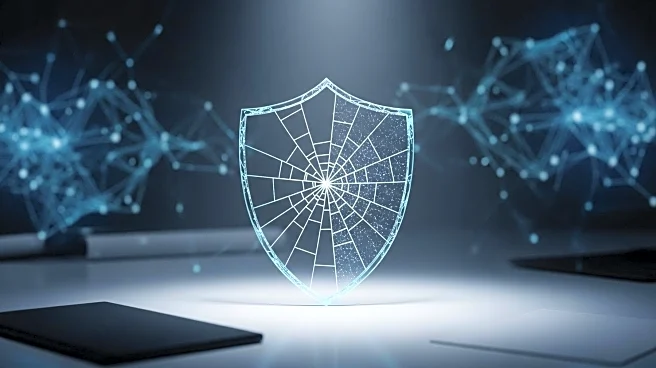What's Happening?
The RondoDox botnet has emerged as a significant threat, employing a 'shotgun' approach to exploit over 50 vulnerabilities across various network devices, including routers, servers, and cameras. According to Trend Micro, the botnet began its activities in mid-2025, initially targeting a command injection flaw in TP-Link Archer AX21 routers. It has since expanded its scope to include vulnerabilities in TBK DVRs and Four-Faith routers, among others. The botnet targets devices from more than 30 vendors, with 18 vulnerabilities lacking CVE identifiers, highlighting the urgent need for patching. The botnet's activities have surged by 230% since mid-2025, exploiting weak credentials and unsanitized inputs. Infected devices are used for cryptocurrency mining, DDoS attacks, and hacking into enterprise networks. RondoDox's operators rotate infrastructure rapidly to evade detection, distributing binaries alongside Mirai and Morte payloads.
Why It's Important?
The widespread targeting of vulnerabilities by the RondoDox botnet underscores the persistent risks faced by organizations with internet-exposed network infrastructure. The botnet's ability to exploit a wide range of devices poses a significant threat to cybersecurity, potentially impacting businesses and public institutions reliant on these technologies. The use of infected devices for malicious activities such as DDoS attacks and cryptocurrency mining can lead to operational disruptions and financial losses. The rapid increase in attacks and the botnet's sophisticated evasion techniques highlight the need for enhanced security measures and timely patching of vulnerabilities to protect against such threats.
What's Next?
Organizations are likely to intensify efforts to secure their network infrastructure by implementing robust security controls and patching known vulnerabilities. Cybersecurity firms may focus on developing advanced detection and remediation strategies to counter the evolving tactics of botnets like RondoDox. The inclusion of certain vulnerabilities in the US cybersecurity agency CISA's KEV list may prompt increased regulatory scrutiny and pressure on vendors to address security flaws promptly. As the botnet continues to evolve, stakeholders in the cybersecurity industry will need to collaborate to mitigate its impact and prevent further exploitation.
Beyond the Headlines
The emergence of the RondoDox botnet highlights broader issues in cybersecurity, including the challenges of managing vulnerabilities across diverse network devices and the importance of maintaining robust security protocols. The botnet's use of 'loader-as-a-service' infrastructure to distribute payloads alongside other malware reflects a growing trend in cybercriminal operations, emphasizing the need for comprehensive threat intelligence and collaboration among cybersecurity professionals. The situation also raises ethical considerations regarding the responsibility of vendors to ensure the security of their products and the role of regulatory bodies in enforcing compliance.










